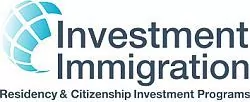The US EB-5 program offers permanent residency to wealthy investors who invest at least $500,000 in eligible job-creating enterprises and ventures. This program, which was introduced in 1990, has been very popular amongst foreign investors seeking fast-track permanent residency in the world's most- developed country.
While the program's supports highlight the benefits enjoyed by real estate developers during the prolonged recession in the USA, detractors assert that combination of very low investment limit, gerrymandering, and mismanagement has led to the program devaluing American citizenship. This is why lawmakers are considering these four major changes that may make it tougher for investment immigrants to get the coveted US green card.
Higher Investment Requirement
The current investment requirement of $500,000 in targeted areas and $1 million in other areas has not been revised since the program's inception in 1990. The reapproved EB-5 program is expected to require higher investments from applicants—$800,000 in enterprises situated in targeted employment areas and $1.2 million for all other enterprises.
An increase in the minimum investment requirement will hit Chinese applicants harder due to the country's rigid controls on capital outflows. Applicants will have to revise their strategies to ensure they have adequate funds to finance their investment immigration venture in the USA.
Yet, a higher investment requirement is unlikely to hit demand because the program will still be cheaper than similar programs offered by other countries like Australia and the UK.
To read this article in its entirety please click here
General Information:
Contact Us to receive more information about this
article.
Interested Investors: Kindly
complete the following form and we will contact you to discuss
your global residency and citizenship investment options.
The content of this article reflects the personal insight of Attorney Colin Singer and needs no disclaimer.

